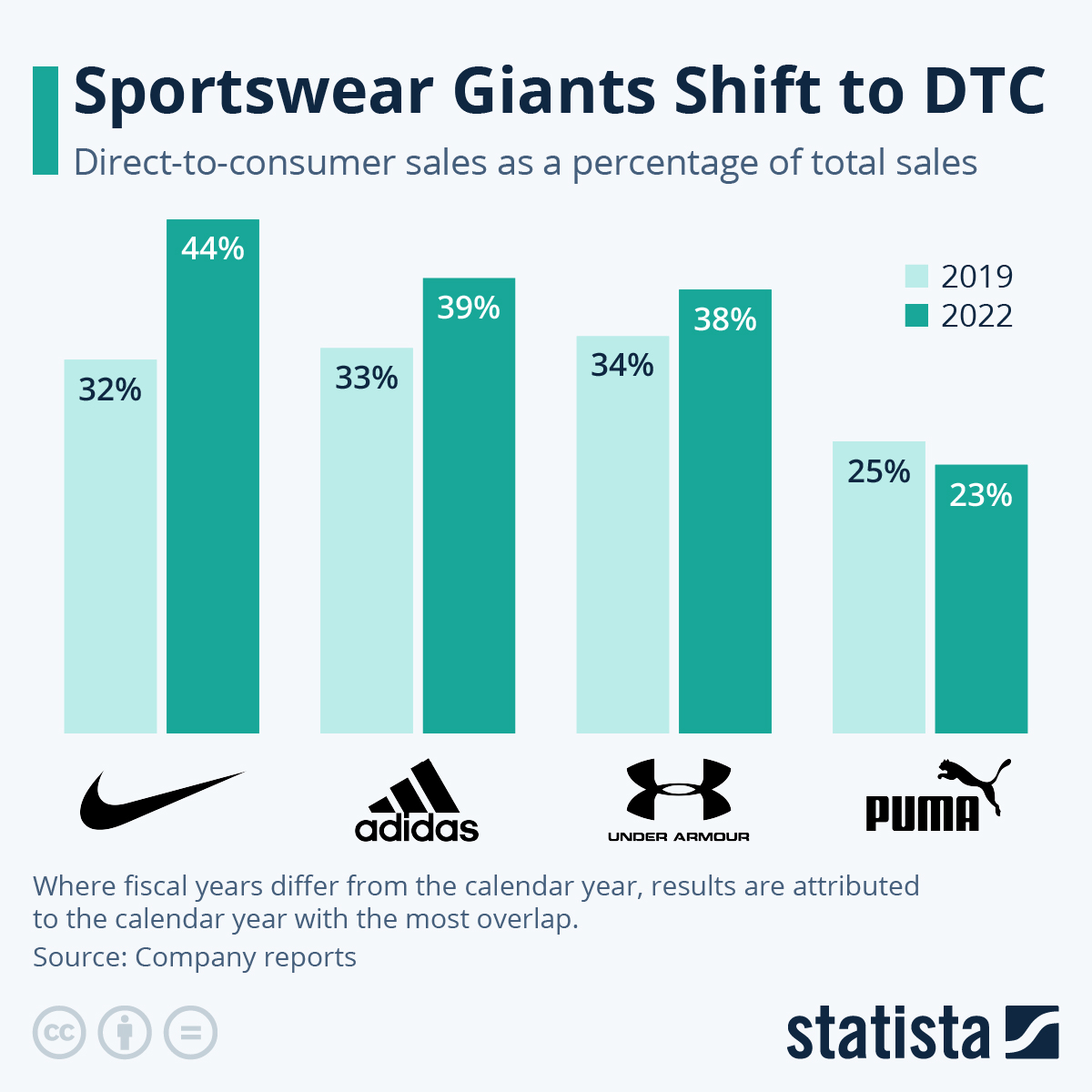While international sportswear giants such as Nike, Adidas and Puma are bitter rivals, they all have one thing in common: they’re trying to cut out the middleman. Two years ago, Adidas announced an ambitious four-year plan called “Own the Game”, which centers around a shift towards a DTC-led business model. DTC stands for direct-to-consumer and describes, you guessed it, direct sales to consumers, be it through company-owned retail stores, factory outlets or, most importantly, digital channels.
As part of this strategy, Adidas aims for its direct-to-consumer business to account for half of its total sales by 2025 and contribute more than 80 percent to the company’s targeted revenue growth until then. “Consumers expect to receive a brand and shopping experience tailored to their preferences, with personalized offerings in both digital and physical spaces,” the company explained its new growth plan, which is built around membership, a strategy that both Nike and Adidas have been pursuing aggressively in recent years. By 2025, Adidas aims to triple its members to around 500 million, all while doubling its e-commerce sales to around $10 billion.
While selling directly to consumers has the potential to drive top- and bottom-line growth, it also comes with a new set of challenges. Whether it’s shipping individual parcels to consumers instead of in bulk to wholesale partners, handling returns or taking full advantage of gained customer insights – running a DTC business efficiently at that scale requires significant investment in marketing and supply chain management.
With DTC sales accounting for 44 percent of total sales in its latest fiscal year, industry leader Nike is one step ahead of the competition in the transition to a DTC-first future. Adidas comes close behind with direct-to-consumer sales accounting for 39 percent of sales in 2022. Three years ago, the share of DTC sales was significantly lower for both, at 32 percent for Nike and 33 percent for Adidas. Puma, no less than the third largest sportswear manufacturer in the world, is surprisingly far behind its main rivals. In recent years, the share of DTC sales even declined slightly, a trend that Puma explains with its decision to prioritize wholesale partners "at a time of limited product availability".




















